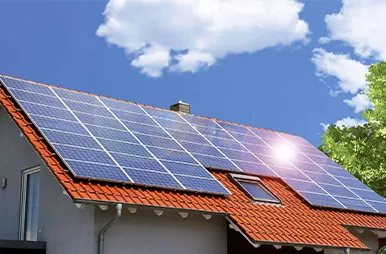tie grid inverter
Understanding Tie Grid Inverters A Comprehensive Overview
In recent years, the push for renewable energy sources has led to the widespread adoption of solar energy systems across the globe. One crucial component in these systems is the tie grid inverter, which plays a vital role in converting the direct current (DC) produced by solar panels into alternating current (AC), allowing the energy to be used by home appliances or fed back into the electrical grid. In this article, we will delve into the workings, benefits, and considerations of tie grid inverters, ensuring a comprehensive understanding of their importance in modern energy systems.
What is a Tie Grid Inverter?
A tie grid inverter, also known as a grid-tied inverter, is designed specifically for systems that are connected to the utility power grid. Unlike off-grid inverters, which store energy in batteries for use during outages, grid-tied inverters operate alongside the utility grid, enabling real-time energy consumption and net metering. They can synchronize the output frequency and voltage with that of the grid, ensuring a seamless transfer of energy.
How Do Tie Grid Inverters Work?
The functioning of a tie grid inverter revolves around a few essential processes. Firstly, solar panels generate DC electricity when exposed to sunlight. The tie grid inverter takes this DC electricity and converts it into AC electricity using a process called inversion. The inverter then adjusts the voltage and frequency of the AC electricity to match the standards provided by the grid.
Moreover, grid-tied inverters use advanced technology to maximize energy extraction from solar panels. They employ techniques like Maximum Power Point Tracking (MPPT), which constantly monitors the performance of solar panels and adjusts operating parameters to ensure they deliver the maximum possible energy.
Benefits of Tie Grid Inverters
1. Energy Efficiency Grid-tied inverters are highly efficient, often achieving energy conversion rates of 95% or higher. This efficiency translates into more usable energy, minimizing waste.
2. Cost-Effectiveness By allowing users to sell excess energy back to the grid, grid-tied inverters can significantly reduce electricity bills. The implementation of net metering policies further adds to the financial incentives.
tie grid inverter

3. Simple Installation and Maintenance Unlike off-grid systems, grid-tied installations usually require less equipment, making them simpler and often cheaper to install. Maintenance is generally minimal since there are no batteries that require regular replacement.
4. Environmental Impact By facilitating the use of renewable energy sources, grid-tied inverters contribute to reducing greenhouse gas emissions and dependence on fossil fuels. They promote cleaner energy generation and support environmental sustainability.
Considerations When Choosing a Tie Grid Inverter
While the advantages of tie grid inverters are significant, there are several considerations to account for when choosing one for your solar energy system
1. Inverter Capacity It is essential to select an inverter that matches the power output of your solar panel system. An inverter with insufficient capacity may lead to underperformance and energy losses.
2. Quality and Brand Choose a reputable brand with a proven track record. Higher-quality products usually come with better warranties and support, ensuring a reliable energy source.
3. Grid Compatibility Ensure the inverter is compatible with the local grid regulations and standards. This knowledge will prevent potential issues with utility companies and ensure compliance.
4. Monitoring Features Many modern tie grid inverters come equipped with monitoring features that allow users to track energy production and consumption in real-time. This data can be vital for optimizing energy usage and performance.
Conclusion
In conclusion, tie grid inverters are critical components of solar energy systems, enabling efficient energy conversion and consumption while promoting the benefits of renewable energy. They facilitate integration with the power grid, offering users the option to sell excess energy back to their utility provider. With their numerous advantages, including cost-effectiveness and reduced environmental impact, it is safe to say that tie grid inverters will continue to play a pivotal role in the future of clean energy. As the world shifts towards sustainable energy practices, understanding and utilizing these inverters will be essential for homeowners and businesses alike. Whether you're considering installing a solar panel system or looking to optimize your existing setup, tie grid inverters are an investment worth making.
-
Navigating Off Grid Solar Inverter: From Use Cases to Trusted PartnersNewsAug.05,2025
-
Solar Edge String Inverter: A Wholesaler’s Guide to Inverter Technology SelectionNewsAug.05,2025
-
Microinverters: Revolutionizing Solar Energy UseNewsAug.05,2025
-
Future of Monocrystalline Solar Panel Efficiency: Latest Technological AdvancesNewsAug.05,2025
-
Solar Panels for House: A Complete Guide to Residential Solar EnergyNewsAug.05,2025
-
Panel Bifacial Performance in Snow and Low-Light ConditionsNewsAug.05,2025







